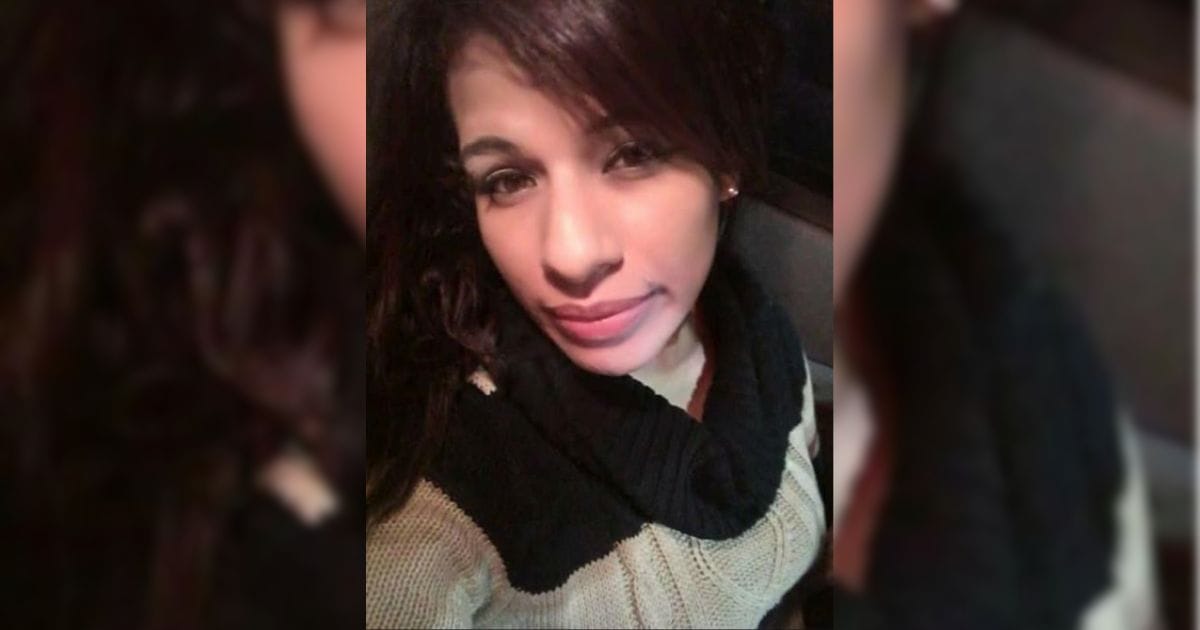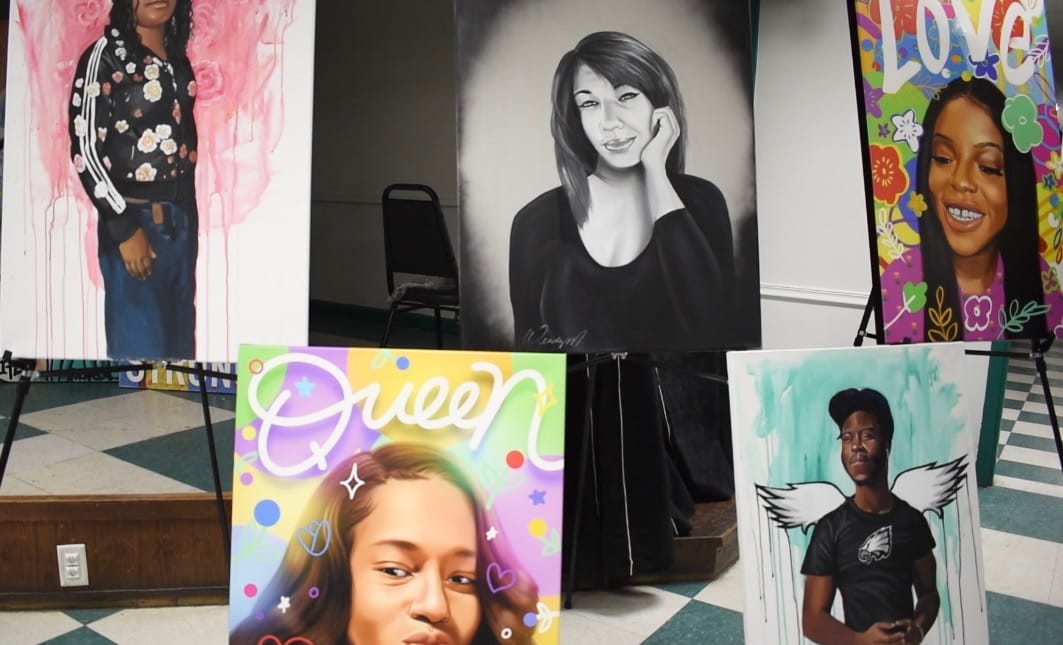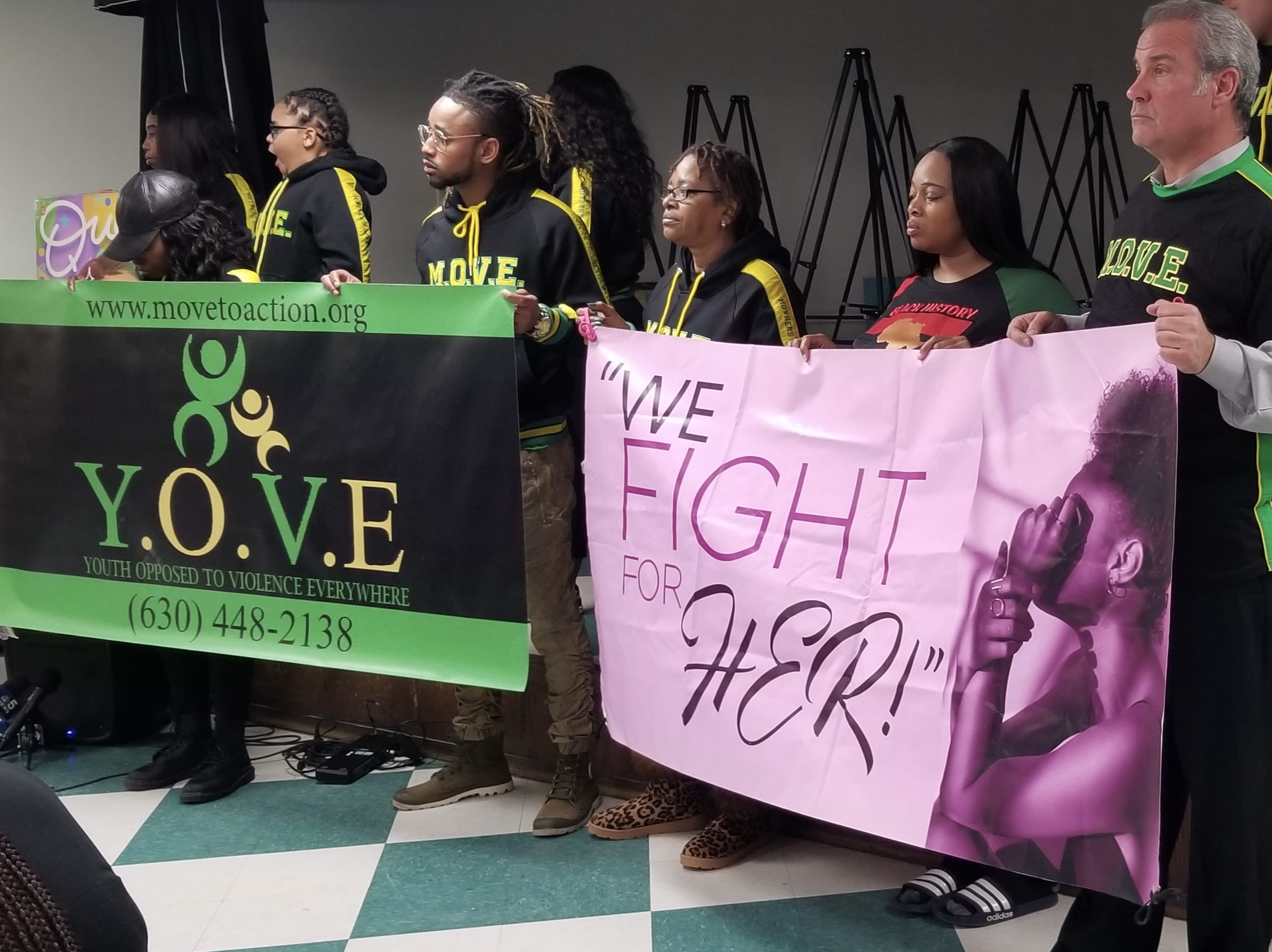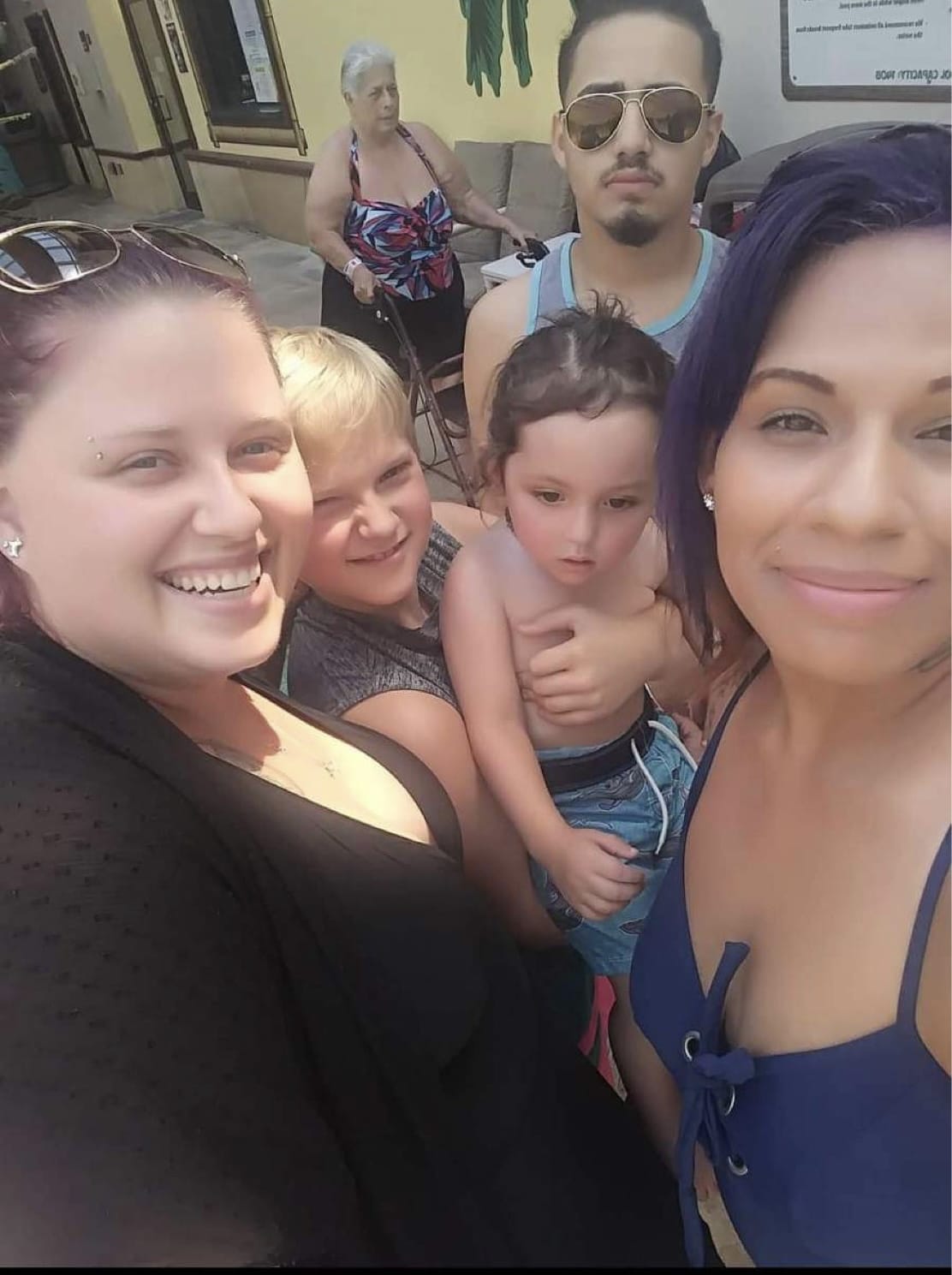Photo caption: Jessica Flores
Sounding The Alarm – Part II: The Jessica Flores Story
An inspector for a utility company strolled through a wooded area in Gary, Indiana, examining electrical boxes one spring day in 2020. Suddenly, the worker was distracted. There, nearby, was something—something on the ground—that caught their attention. Curious, the inspector inched closer and closer, then closer…
It was an eerie discovery: A human skull that the authorities would later determine had been penetrated by a bullet. A family member said the skull had been scarred by coyotes. Both the skull and skeletal remains were scattered about the site. The flesh and blood of Jessica Flores had long since vanished.
The remains were discovered on April 9, 2020. Flores, 36, had been reported missing in February 2019—almost a year earlier. A subsequent autopsy determined that it was a case of murder.
Collectively, thousands of Black and brown women go missing or are murdered each year, according to researchers, analysts, women advocacy groups and others who contend that the color of a female victim’s skin matters in America. The extent to which it matters to America, many observers say, is reflected in the lack of media attention the cases of Black and other women of color receive, compared to the cases of missing white women. Such disparity, they contend, is also evident in the not-so-easily quantifiable number of those cases—the missing and the murdered—that each year go unsolved. It amounts to a rising sea of carnage that one report has called “an unspoken epidemic.”
From 2019 through 2021 alone, 5,240 Black women and girls were killed, as well as 1,990 females of Hispanic and Latin origin—a combined total of 7,230 homicides, according to the Centers for Disease Control and Prevention.
Their cases, analysts say, are less likely to stir public outcry and more likely to grow colder and colder each year as families, hoping for answers and justice, are left with only more questions, and no solace.
This much is clear and calculable: That firearms were used in 53.9 percent of female homicides, although at a higher rate in the homicides of Black women, at 57.7 percent, according to a 2017 CDC study. That report also found that non-Hispanic Black and American Indian/Alaska Native women experienced the highest rates of homicide at 4.4 and 4.3 per 100,000 population, respectively, and Hispanic women at 1.8 per 100,000, compared to all other races that each had a homicide rate of less than 2 per 100,000.
That missing females and males of color in 2021, according to the National Crime Information Center, account for 38 percent of the total 521,000 current missing persons cases. (See Story 1 in this series for a more comprehensive look at the numbers.)
Amid the numbers of missing and murdered Black and brown women and girls are innumerable human tales of families and loved ones still hoping against time and the odds.
As time passes, memories fade, like the edges of an aging tattered photograph. A family waits for justice for a loved one savagely murdered, while in a nearby wooded area a body decomposes. Like the Flores family’s story, there are countless other stories of loss, human suffering, and mostly of the wait for answers.
For many families, there is no word for days, weeks, months, even years, if ever, about the whereabouts of missing loved ones. No call from police that they have found a suspect in the murder.
For Jessica Flores’ family, however, the telephone rang one spring day with a call from the authorities saying they believed they had located the remains of their missing daughter, mother, sister, aunt, friend. With that phone call came the reality that their missing loved one had become a member of another unenviable group: missing women of color who had been murdered.
The Flores family is among thousands and their story a microcosm of the wait for justice, of the hope for resolution, and the struggle to be heard. Of the daily agony of dealing with losing a loved one to murder, or to the tally of missing persons, and of the frustrating, often futile, effort to have their stories humanized.
“There’s no words for it,” says Genesis Flores, 32, Jessica’s sister. “There’s no words for the pain.”
“We won’t stop until we get justice… It’s a fight daily,” she added. “It’s a struggle daily. It’s so hard because she was full of energy and full of life. Just because she had a drug problem… Just because they’re struggling with their demons doesn’t mean they aren’t human.”
‘A Dented Skull’
Exactly when Flores was murdered is unknown. The Lake County (Indiana) Sheriff’s Department says she was murdered on or about Feb. 24, 2019. Her body was never fully retrieved, only the skull and cervical vertebrae discovered in the woods by the utility worker, according to the coroner who investigated the discovery.
Her body had been left to decay for over a year, exposed to the elements of the seasons—to the blistering heat of summer, and the freeze and thaw of winter.
The coroner’s report from the Office of the Lake County Coroner dated April 14, 2020, included some of the missing details: cause of death was head injury resulting from a gunshot wound to the head. Manner of death: homicide.
The report further described the results of the autopsy performed at the county morgue as “gunshot wound to the head situated on the left frontal bone four inches below the top of the head, and two inches to the left of the midline of the head was a half-inch round entrance gunshot wound with fracture lines involving the left frontal bone, left parietal bone and left temporal bone.
“The wound path sequentially injured the skull and brain,” the coroner report states. “No exit wound was noted.”
The family’s grief, however, is noted with thoughts of the brutality Flores suffered in her last earthly moments before her body was discarded like trash.
Although unable to bury the trauma of the experience that has gripped their lives from the moment the authorities reported finding Flores’ remains, the family began making preparations to lay her to rest the best way they could.
Ebony Peel-Flores, 32, Flores’ sister-in-law, recalls standing at the Lake County Coroner’s Office, with her family after being contacted by officials, she said.
In an interview, Peel-Flores, who is the family’s designated spokesperson and married to Flores’ brother, Christopher Flores, recalls the funeral workers advising her family not to spend any funds on a burial. There simply weren’t enough remains. Cremation was the only possible option, the family at last concluded with aching unease.
Flores’ six children wanted a piece of her to keep with them in her memory. Perhaps an urn for each. But there would not be enough of her earthly remains for each child to acquire even a tablespoon of ash, Peel-Flores says. Upon cremation, there were two inches of ash to put in an urn.
The family’s scars run deep.
Three years since the discovery of Flores’ remains, Peel-Flores finds it heartbreaking to witness her nieces and nephews, ages 6 to 22, having to live their lives deprived of everyday moments with their mother. Their mother’s murder has taken a toll on each of them, Peel-Flores says, but primarily the eldest siblings, who aren’t shielded from the reality that their mother was murdered.
“My youngest niece and my oldest nephew really struggle with it, not like crying or sad; they miss their mom,” Peel-Flores says, her words buttered with emotion. “It’s really hard to see them struggle.”
Remembering Purple Rain
During an interview one afternoon, Peel-Flores cries, tears rolling down her cheeks as she tries to fathom Jessica’s lifeless body being tossed and abandoned.
“I don’t even know the words to describe the feeling, that’s the hardest part,” Peel-Flores says, imagining Flores’ body dumped by her killer. “For him to have discarded her like a piece of garbage and for her to just rot away for months, it’s just not fair.”
In 2019, law enforcement officials in Indiana identified Drew Carter III as a suspect in Flores’ disappearance. Even before her body was discovered, the authorities arrested and charged Carter, though subsequently dismissing charges pending “lab results and after further investigation,” according to an affidavit filed on September 23, 2019.
The case, however, has since been reinstated. He is charged with murder, kidnapping while armed with a deadly weapon, criminal confinement while armed with a deadly weapon, and criminal confinement resulting in bodily injury, according to the Lake County Sheriff’s Department in Indiana filed on October 3, 2022.
Carter is out of jail and awaiting trial. His next court appearance is October 5, 2023.
The Flores family has been vocal in its criticism of the police’s handling of the case and has also accused them of neglect. Contacted by email, the Lake Sheriff’s Department would not respond to the Flores family’s concerns, and instead deferred calls to the Gary, Indiana, Police Department, saying it is no longer part of the Lake County Metro Homicide Unit that investigated the case.
The Flores family finds the whole experience discomforting, to say the least, and their frustrations compounded by the realities of their loss.
Without a body or closure, if only the chance to see Jessica Flores’ face one more time, even in death, the Flores family is left with only memories. They recall fonder times, memories of Flores being free-spirited and full of life.
Peel-Flores vividly remembers the summer day in 2018, when her two children and Flores’ son spent a day at a waterpark in the Wisconsin Dells, a resort just north of Chicago. Flores looked summertime fine, wearing freshly dyed, radiant purple hair. She strutted like a model in her swimsuit poolside, exuding an abundance of confidence.
“She looked so cute and she was feeling herself. She put on her cute little one piece, just walking around like she owned the place,” says Peel-Flores.
While basking in the sun, Flores abruptly decided to make a run toward the pool, jumping into the air and descending into the water. Unbeknownst to her, the water quickly turned purple. As she climbed out of the pool, purple droplets fell from her body.
Even years later, Peel-Flores still remembers how she couldn’t stop laughing at the sight of her sister-in-law dripping in purple dye. But that didn’t stunt Flores’ confidence. She was purple and owned it, tossing her hair, and sashaying out of the pool area.
Being confident and strong was one of Flores’ many characteristics, according to Peel-Flores. She was like a hard candy shell with a soft layer on the inside to those she loved. Flores was pretty. At 5’5”, she was small but took no mess. When her brothers needed backup in a fight, they called for their sister.
“She was very rough and could run the streets with the best of ‘em. But when she was home and able to be soft, she was,” recalls Peel-Flores.
One of Flores’ favorite things to do was to support friends and family. When her mother, Adela Perez, was battling both chemotherapy and grief, there was no option but to be by her mother’s side.
“A few months before Jessica was murdered, her baby brother was murdered,” says Peel-Flores. “Seeing her mom fight cancer and lose a baby (son) was a realization for her.”
And then, at the peak of their mother-daughter relationship, Jessica was slain.
Genesis Flores admits that her big sister had her share of demons. “She was troubled and battled drug addiction,” Flores says. But that still doesn’t mean she shouldn’t be seen or treated as human. She didn’t deserve to be murdered.”
With Jessica gone, the light and spark of their family has been extinguished.
“Jessica lit up a room when she came in,” Genesis Flores recalls. “It’s a tragedy that they stole her from us because she was the light and heart of our family. She kept us all together, and a piece of her left when she left.”
Not Just Waiting For Justice
While fighting for justice, the Flores family says they feel neglected by police and that police investigators have not demonstrated enough concern for solving Flores’ case. It was never a priority, much less the top priority they believe it was, the family contends.
They say their feeling of carelessness by police was perpetuated by the authorities’ release of Carter on January 1, 2023, the suspect who was charged with Flores’ murder and in custody since March 2019.
Carter was released, however, under Rule 4 of the Indiana Criminal Procedures, which allow a defendant to be released, if a trial is not scheduled within six months.
Still, that technicality offered little solace to the family.
“Here he is out on bail, allowed to travel between Illinois and Indiana,” Peel-Flores said. “He’s living his life. He gets to live, breathe, walk around, see his kids if he has any, and hug his mom.”
Four years after Flores’ murder, her family is still navigating a whirlwind of grief but say they have found community and purpose in trying to keep Jessica’s name alive, and by providing support for other families of murdered victims.
On a winter’s Saturday afternoon in February, the Flores family sat together at an event at Greater Rock Baptist Church on Chicago’s West Side. They had gathered with others to help raise awareness on missing and murdered women of color.
Peel-Flores and Genesis Flores spoke to a crowd of several dozen about Flores’ story and the family’s continued fight for justice. They called for media coverage of others still missing. And they encouraged the audience to attend the pre-trial hearing of the man charged with Jessica’s murder.
“We just want to get justice for my family and make sure that he can’t hurt or murder someone else,” Genesis Flores says of the suspect.
It has been four years since her sister’s murder. There is no complete body. No exact date of death. And still no solace. Only a skull, a fleshless vertebra, and a family still waiting, still hoping, for answers and justice.
Next: After 20 years, secrets, questions and a family retraumatized










